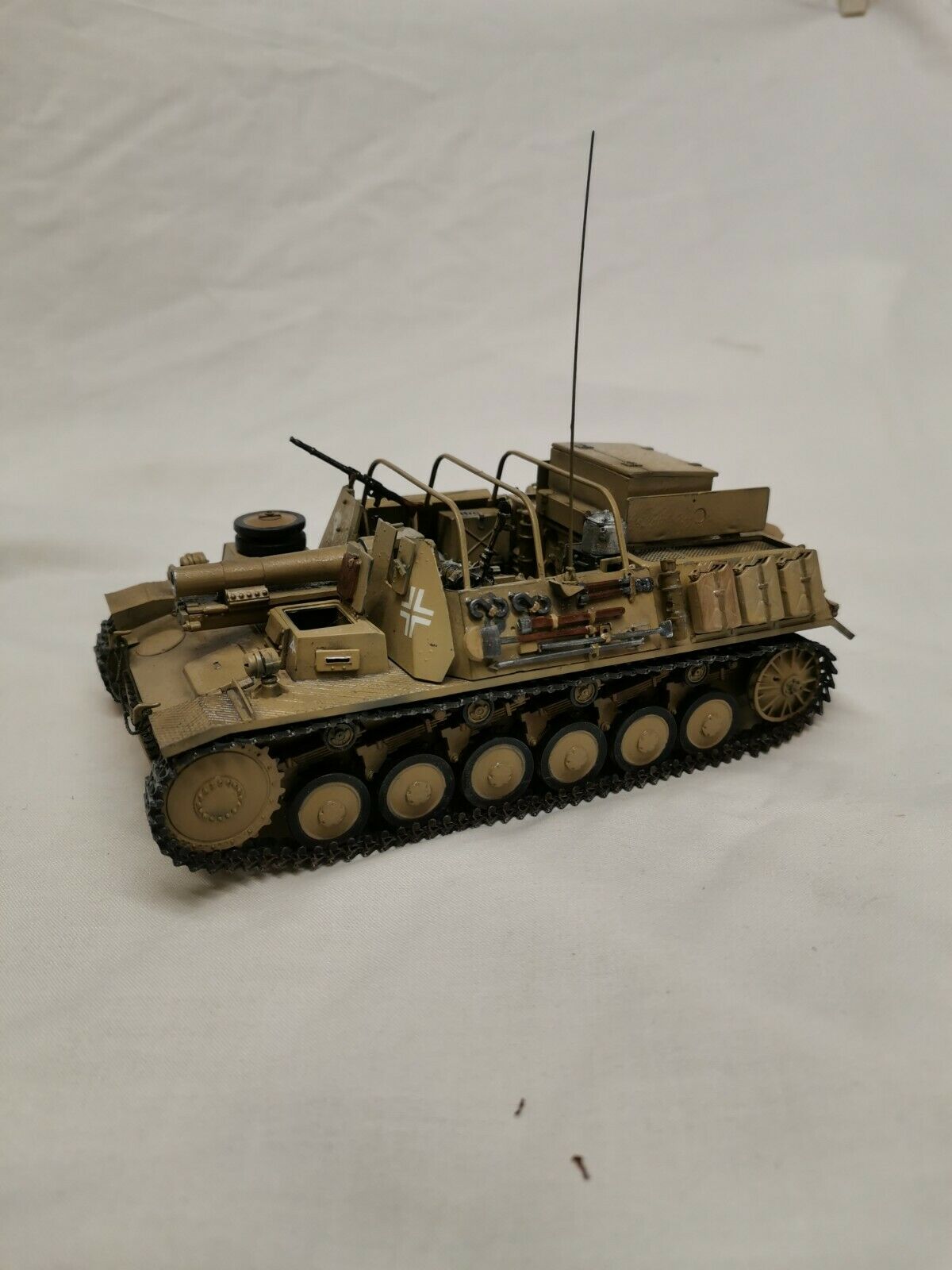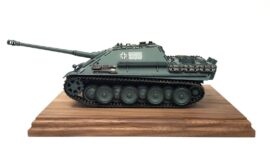The 15 cm sIG 33 auf Fahrgestell Panzerkampfwagen II (Sf), often referred to as the 15 cm sIG 33 auf Pz.Kpfw. II (Sf), was a German self-propelled artillery piece used during World War II. This vehicle combined the chassis of the Panzer II light tank with the powerful 15 cm sIG 33 infantry gun, creating a mobile platform capable of delivering heavy indirect fire support to frontline units.
Development and Design
The need for mobile artillery in the German Wehrmacht led to the development of the 15 cm sIG 33 auf Pz.Kpfw. II (Sf). The 15 cm sIG 33, a heavy infantry gun, had been a staple of German artillery since the 1920s. Known for its ability to deliver powerful high-explosive shells over relatively short distances, it was an ideal candidate for mounting on a self-propelled chassis.
The Panzer II, originally designed as a light tank, provided a suitable base for this conversion due to its availability and mechanical reliability. The initial project to mount the sIG 33 on a Panzer I chassis (resulting in the 15 cm sIG 33 auf Pz.Kpfw. I) showed the feasibility of the concept but also highlighted the need for a more robust platform. Consequently, the more capable Panzer II chassis was selected for further development.
In 1941, Alkett, a German armaments manufacturer, undertook the conversion. The result was a vehicle with a distinct profile: the sIG 33 gun was mounted on the chassis of the Panzer II, but due to the size of the gun, significant modifications were necessary. The turret was removed, and the superstructure was enlarged to accommodate the gun and its recoil mechanisms. This design provided the crew with limited protection, as the armor was relatively thin and open-topped, which exposed them to enemy fire and adverse weather conditions.
Armament and Capabilities
The primary armament of the 15 cm sIG 33 auf Pz.Kpfw. II (Sf) was the 15 cm sIG 33 heavy infantry gun. This weapon fired a variety of ammunition types, including high-explosive (HE) and armor-piercing (AP) shells. The HE shells were particularly effective against infantry and fortified positions, capable of causing significant destruction with their large explosive payloads.
The vehicle’s mobility, provided by the Panzer II chassis, allowed the gun to be deployed quickly to where it was needed most. However, the weight of the gun and the additional armor strained the chassis, resulting in reduced speed and maneuverability compared to the original Panzer II. The maximum road speed was around 40 km/h (25 mph), with a range of approximately 140 km (87 miles) on roads.
Operational History
The 15 cm sIG 33 auf Pz.Kpfw. II (Sf) saw limited production, with around 12 units built in total. These vehicles were primarily used on the Eastern Front, where the need for mobile artillery was acute due to the vast distances and fluid nature of the battlefield.
Their deployment highlighted both strengths and weaknesses. The firepower of the sIG 33 gun was highly valued, and its mobility allowed German units to bring heavy artillery support to bear more quickly than traditional towed artillery pieces. However, the thin armor and open-top design left the crew vulnerable to small arms fire, shrapnel, and air attacks.
Despite these vulnerabilities, the 15 cm sIG 33 auf Pz.Kpfw. II (Sf) proved effective in its intended role. It provided critical fire support during key engagements, particularly in urban and fortified areas where its powerful HE shells could be used to devastating effect. However, as the war progressed and more advanced self-propelled artillery platforms were developed, these early models were gradually phased out.
Legacy
The 15 cm sIG 33 auf Fahrgestell Panzerkampfwagen II (Sf) represents an early attempt by the German military to create mobile artillery platforms that could keep pace with the rapidly moving mechanized forces of World War II. Although produced in limited numbers, its development laid the groundwork for future self-propelled gun designs. The lessons learned from its deployment contributed to the evolution of more advanced and better-protected self-propelled artillery vehicles in the later stages of the war.
In summary, the 15 cm sIG 33 auf Pz.Kpfw. II (Sf) was a significant step in the evolution of mobile artillery, demonstrating both the potential and challenges of mounting heavy artillery on armored vehicle chassis. Its impact on the battlefield, although limited by its small production numbers, underscores the continual innovation in military technology driven by the needs of World War II.













